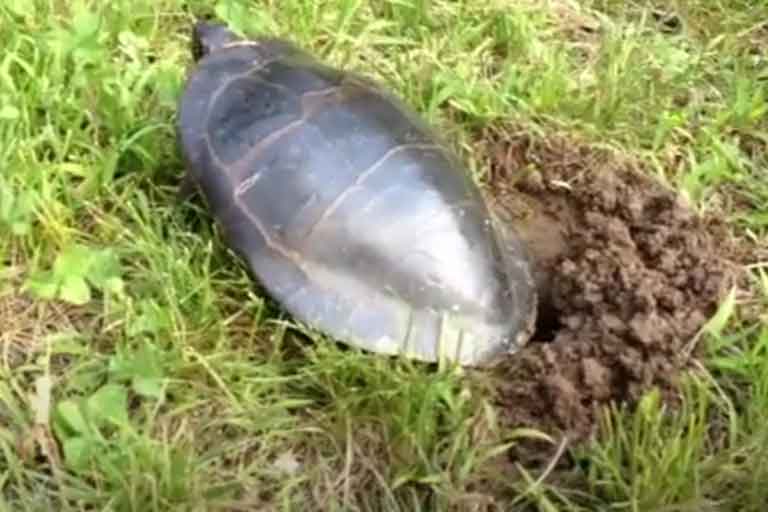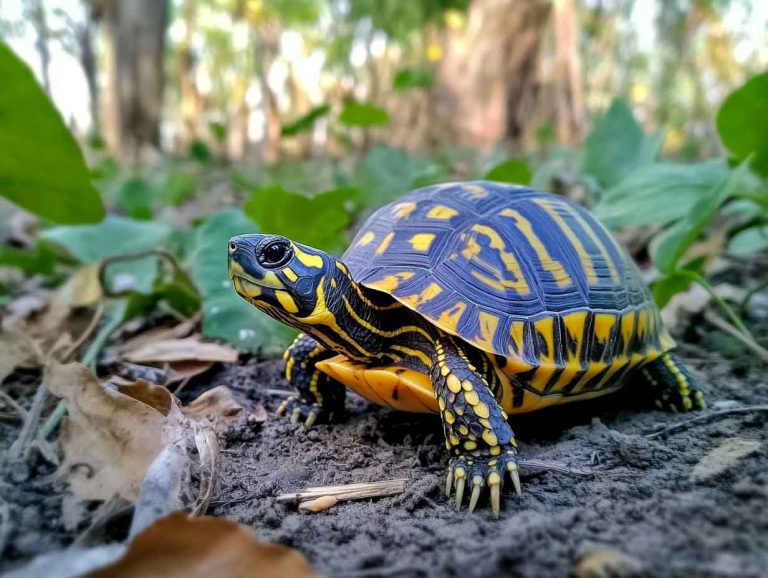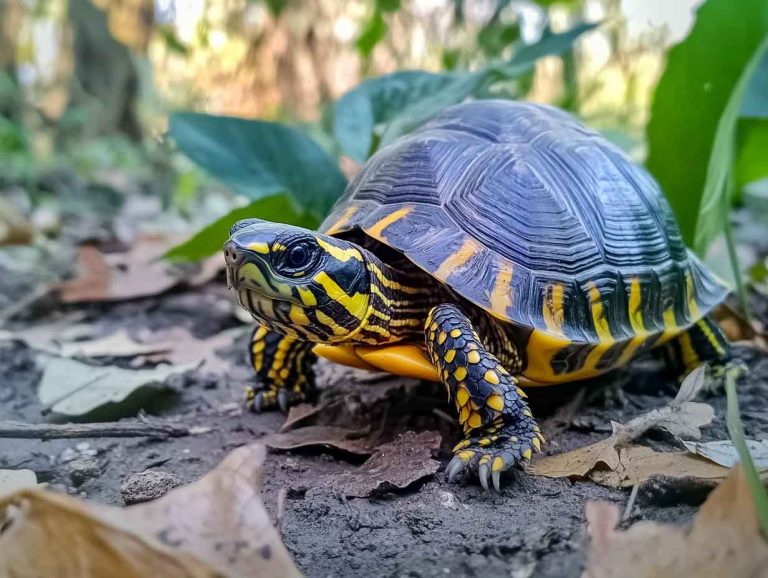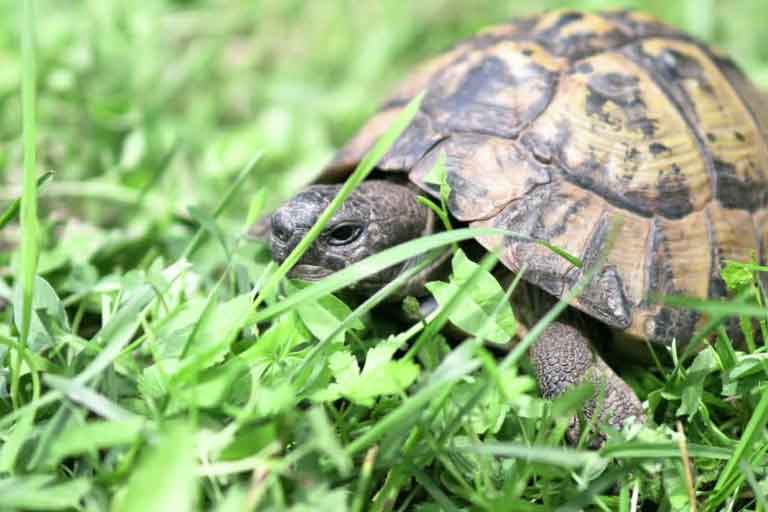Why Do Turtles Dig Holes? Facts You Didn’t Know About Turtle Behavior
If you’ve ever watched a turtle diligently scraping away at the dirt with its sturdy little legs, you might’ve wondered, Why on earth are they digging? I’ve been fascinated by these slow-moving, shell-dwelling creatures for years, and their digging habits are one of the most intriguing things about them. Turtles dig holes for a variety…
If you’ve ever watched a turtle diligently scraping away at the dirt with its sturdy little legs, you might’ve wondered, Why on earth are they digging? I’ve been fascinated by these slow-moving, shell-dwelling creatures for years, and their digging habits are one of the most intriguing things about them. Turtles dig holes for a variety of reasons, and it’s not just random behavior—it’s deeply tied to their survival and instincts. In this first part of our deep dive, I’ll walk you through the main reasons turtles dig, share some surprising facts, and give you a glimpse into their world. Let’s get started!
Why Do Turtles Dig Holes?
Turtles aren’t just digging for fun (though I like to imagine they enjoy it!). Their digging behavior is driven by instinct and serves specific purposes. Whether they’re wild or living in your backyard, turtles dig for reasons that are critical to their survival. Here are the top reasons why turtles dig holes:
1. Nesting and Laying Eggs
If you’ve got a female turtle, one of the main reasons she’s digging is likely to lay eggs. Most turtle species are hardwired to dig nests in soft soil or sand to deposit their eggs. I’ve seen this firsthand with my own pet turtle, Matilda, who turned into a determined little excavator when it was time to lay her eggs. She’d scrape away at the substrate in her enclosure, creating a perfect little chamber for her clutch.
Turtles are picky about their nesting sites. They look for spots with the right temperature, moisture, and soil consistency to ensure their eggs have the best chance of hatching. For example, sea turtles famously crawl onto beaches to dig deep nests, while terrestrial species like box turtles prefer loose, well-drained soil. Fun fact: some turtles, like the red-eared slider, can dig nests up to 6 inches deep to protect their eggs from predators and harsh weather!
2. Hibernation (Brumation)
Did you know turtles don’t just “sleep” through winter like we might imagine? Many species, especially those in colder climates, dig holes to brumate—a reptile version of hibernation. I remember watching a documentary about wild box turtles burrowing into the ground to escape freezing temperatures, and it blew my mind how they instinctively know to do this.
During brumation, turtles dig burrows to stay insulated from cold weather and avoid predators. These burrows can be surprisingly deep—sometimes over a foot down—depending on the species and environment. Aquatic turtles, like painted turtles, may even bury themselves in the mud at the bottom of ponds to stay safe during winter. It’s like they’re tucking themselves into a cozy, earthy blanket until spring arrives.
3. Thermoregulation
Turtles are ectothermic, meaning they rely on their environment to regulate their body temperature. Digging holes is one way they manage this. On hot days, I’ve noticed my turtles digging shallow depressions to escape the sun’s heat and cool off in the damp, shaded soil underneath. Conversely, in cooler weather, they might dig to find a warmer spot or to bask in a sun-warmed patch of earth.
This behavior is especially common in desert-dwelling species like the desert tortoise, which digs burrows to stay cool during scorching days and warm during chilly nights. It’s amazing how these creatures use the earth itself as a thermostat!
4. Foraging for Food
Have you ever caught your turtle pawing at the ground like it’s on a treasure hunt? I’ve seen my turtles do this, and it’s adorable! Many turtles dig holes to uncover tasty morsels like worms, grubs, or plant roots. This is especially true for omnivorous species like box turtles, which use their strong front legs to rummage through soil for snacks.
In the wild, turtles often dig in moist areas where insects and small critters are likely to hide. Aquatic turtles, like softshell turtles, might even dig into the muddy bottoms of ponds or rivers to find crustaceans or aquatic plants. It’s like they’re chefs preparing their own farm-to-table meal! Fun fact: some turtles can detect food by smell, using their keen senses to pinpoint exactly where to dig.
5. Creating a Safe Hideout
Turtles are all about staying safe, and digging holes is a key part of their defense strategy. I’ve noticed that my turtles sometimes dig shallow burrows to hide from predators or even from curious humans (sorry, Matilda, I just wanted to check on you!). These hideouts provide a quick escape from danger and a place to rest without being disturbed.
For species like the gopher tortoise, digging is next-level—they create elaborate burrows that can be over 10 feet deep and 30 feet long! These burrows aren’t just for the tortoises; they’re like underground hotels, offering shelter to other animals like snakes, frogs, and even owls. It’s incredible how one turtle’s digging can benefit an entire ecosystem.
6. Marking Territory or Exploring
Sometimes, turtles dig simply to explore their environment or establish their space. I’ve watched my turtles scratch at the ground as if they’re mapping out their territory or just satisfying their curiosity. In the wild, digging can help turtles mark their home range or create pathways through dense vegetation.
This behavior is more common in terrestrial turtles, but even aquatic ones might dig to rearrange their environment, like shifting gravel or sand in a tank. It’s their way of saying, “This is my space, and I’m making it my own!” If you’ve got a pet turtle, you might notice this when they rearrange their substrate—it’s like they’re redecorating their home.
How Turtles Dig: A Closer Look
Now that we’ve covered why turtles dig, let’s talk about how they do it. I find it mesmerizing to watch turtles use their sturdy legs like little shovels. Most turtles use their front limbs, which are equipped with strong claws, to scoop out soil or sand. Their back legs often help stabilize them or push dirt out of the way. Sea turtles, for example, use their flipper-like front limbs to create deep, bowl-shaped nests on beaches, which is no small feat given how awkward it looks!
The depth and shape of the hole depend on the turtle’s purpose. For nesting, the hole is often deep and narrow to protect eggs. For brumation or hiding, it might be wider and shallower. Desert tortoises, for instance, are master architects, digging burrows with a slight downward slope to maintain stable temperatures. It’s like they’ve got a built-in engineering degree!
Tips for Supporting Your Turtle’s Digging Instincts
If you’re a turtle owner like me, you want to make sure your shelled friend is happy and healthy. Digging is a natural behavior, so it’s important to support it, especially if you’re keeping a pet turtle. Here are some tips I’ve learned from my own experience to help your turtle dig safely and comfortably:
1. Provide the Right Substrate
To let your turtle dig to its heart’s content, make sure its enclosure has a suitable substrate. I use a mix of topsoil, sand, and coconut coir for my terrestrial turtles, which gives them a soft, diggable surface. For aquatic turtles, a layer of fine gravel or sand at the bottom of the tank works well. Aim for at least 4–6 inches of depth for terrestrial species and 2–3 inches for aquatic ones to mimic their natural environment. Just make sure the substrate is free of sharp objects or chemicals that could harm your turtle.
2. Create a Designated Digging Area
I’ve found that giving my turtles a specific spot to dig helps keep their enclosure tidy and encourages their natural behavior. For example, I set up a corner with loose, moist soil for my box turtle, and she loves it! If you have an outdoor enclosure, consider a shaded area with soft dirt for digging. For indoor setups, a shallow tray filled with diggable material can do the trick. This also makes it easier to clean up after their digging adventures.
3. Monitor for Stress or Over-Digging
While digging is normal, excessive digging can sometimes signal stress or health issues. I once noticed one of my turtles digging frantically, and it turned out the enclosure was too small, making her feel cramped. Keep an eye on your turtle’s behavior—if they’re digging non-stop or seem agitated, check their environment for issues like inadequate space, poor temperature, or lack of hiding spots. A comfy turtle is a happy digger!
FAQs
1. Do All Turtles Dig Holes?
Not all turtles dig, but most do to some extent, depending on their species and environment. Terrestrial turtles, like box turtles and tortoises, are more likely to dig for nesting, brumation, or hiding. Aquatic turtles may dig less but still burrow in mud or gravel for food or rest. If your turtle isn’t digging, it might just not need to based on its habitat or instincts.
2. Can Digging Harm My Turtle?
Digging is generally safe and natural, but there are a few things to watch out for. Ensure the substrate isn’t too hard or rocky, as it could injure their claws or shell. Also, if your turtle is digging excessively in an attempt to escape, it might be stressed. Check their enclosure conditions and consult a vet if you’re concerned.
3. How Can I Tell If My Turtle Is Digging to Lay Eggs?
If your female turtle is digging deep, flask-shaped holes, especially in a specific spot, she’s likely preparing to lay eggs. You might also notice her acting restless or spending a lot of time in one area. Provide a deep, moist substrate and a quiet space to support her. If you’re unsure, a vet can confirm if she’s gravid (carrying eggs).
Final Words
Turtles are incredible creatures, and their digging habits are a window into their survival instincts. Whether they’re nesting, brumating, foraging, or just chilling in a cozy burrow, digging is a big part of what makes turtles so unique. I love watching my turtles get to work in the dirt—it’s like they’re sharing a piece of their wild side with me. If you’re a turtle owner, embrace their digging by providing a safe, enriching environment. And if you’re just curious about these shelled wonders, I hope this article has given you a new appreciation for their earthy antics. Got a turtle digging story? I’d love to hear about it—share it in the comments below!







